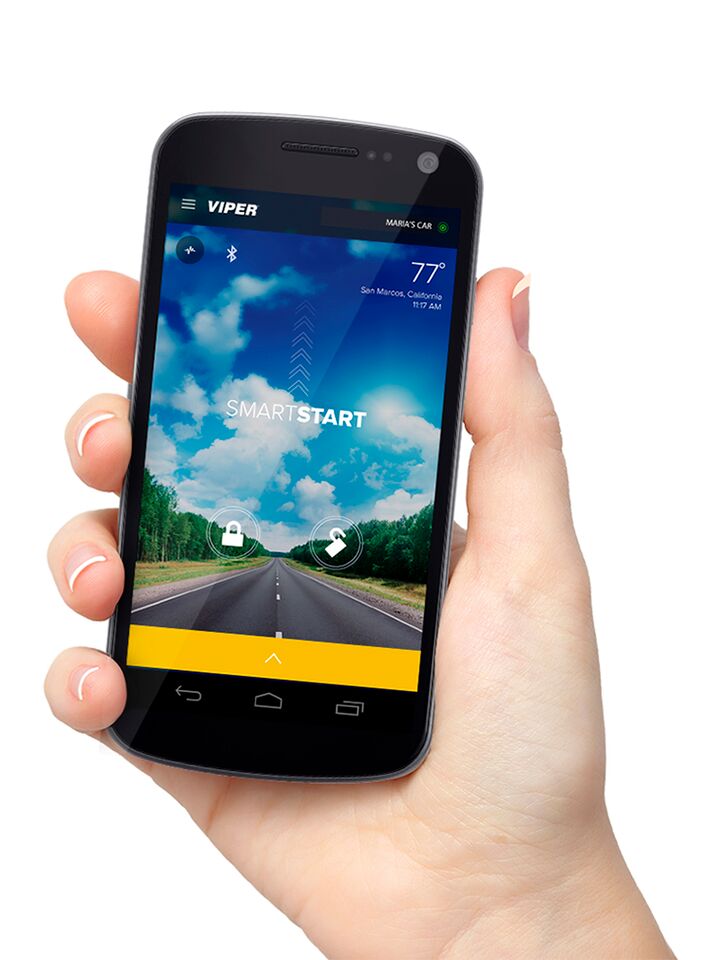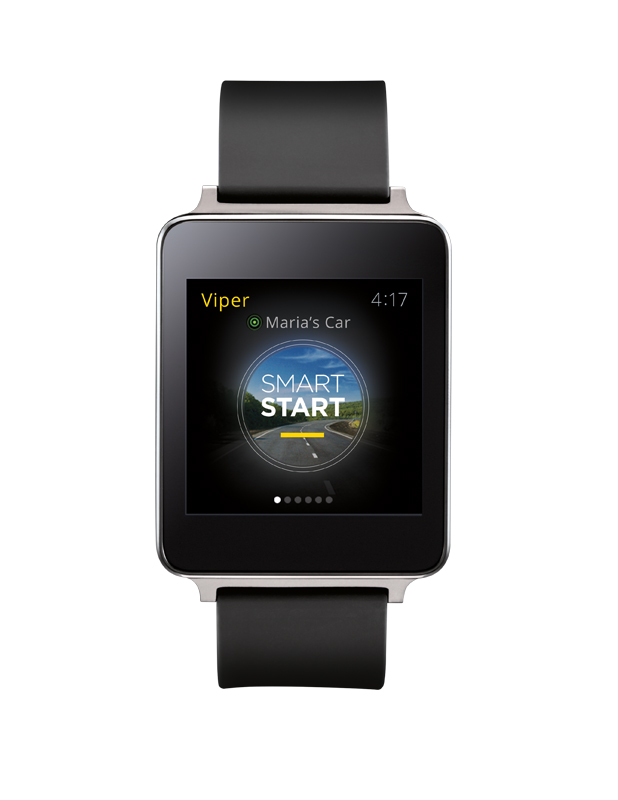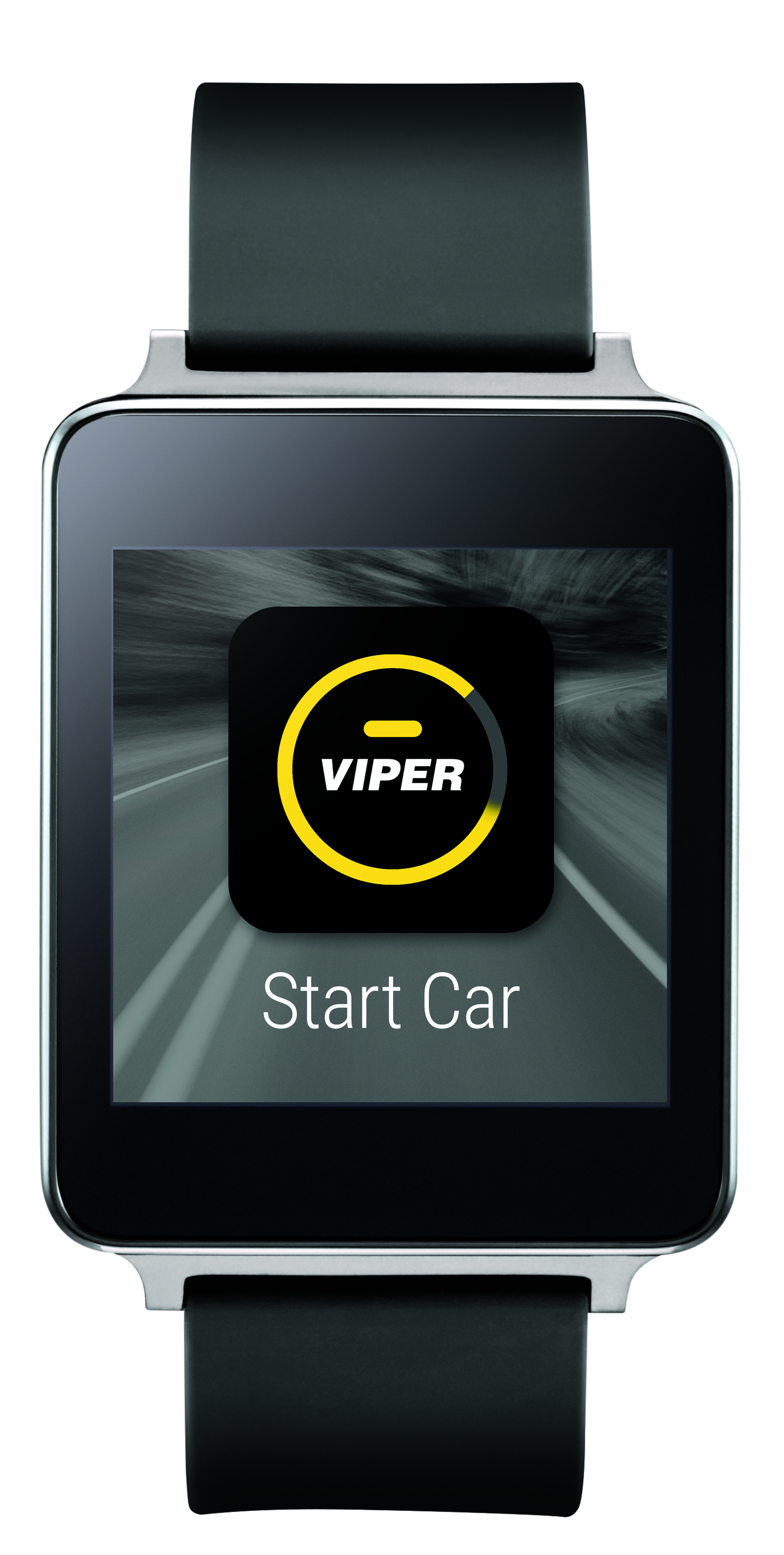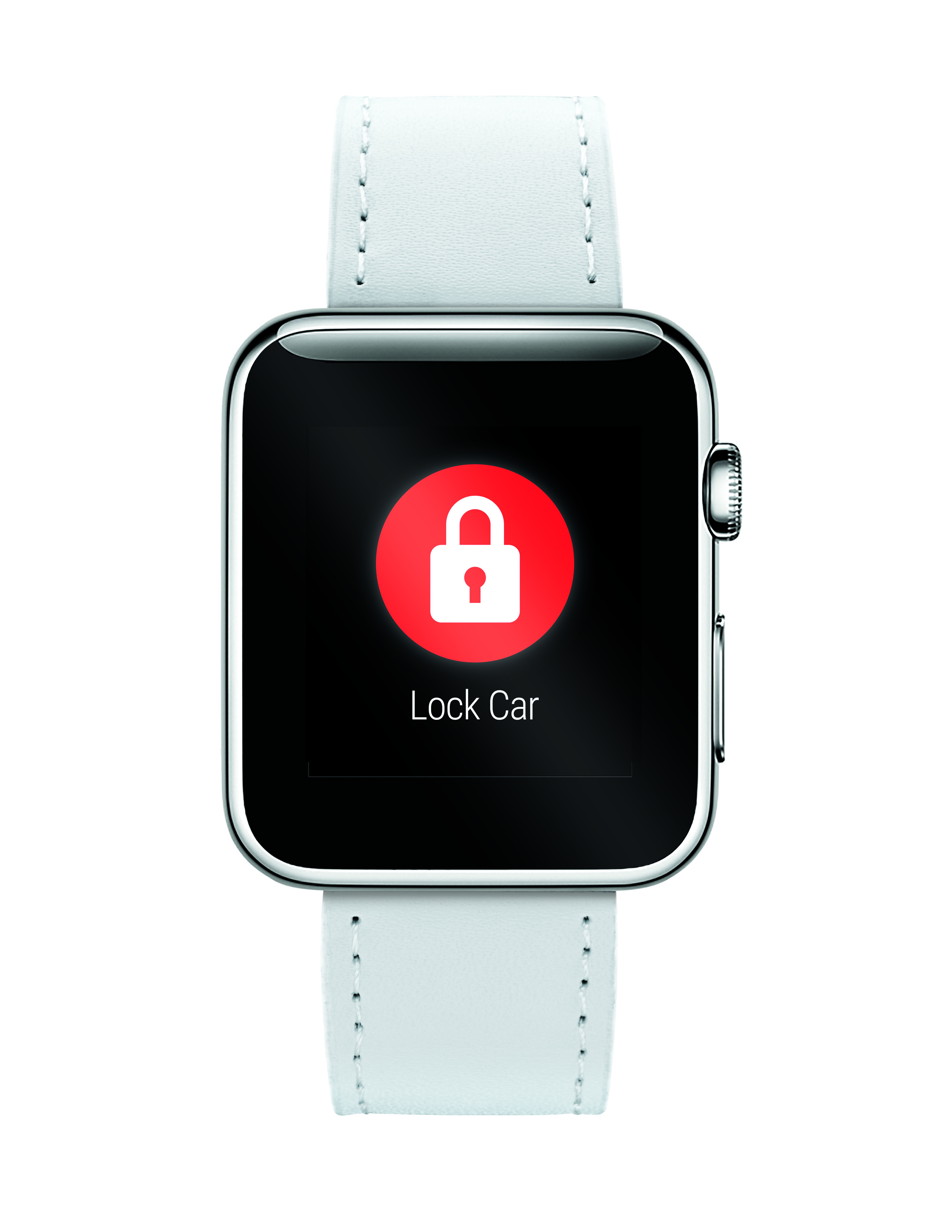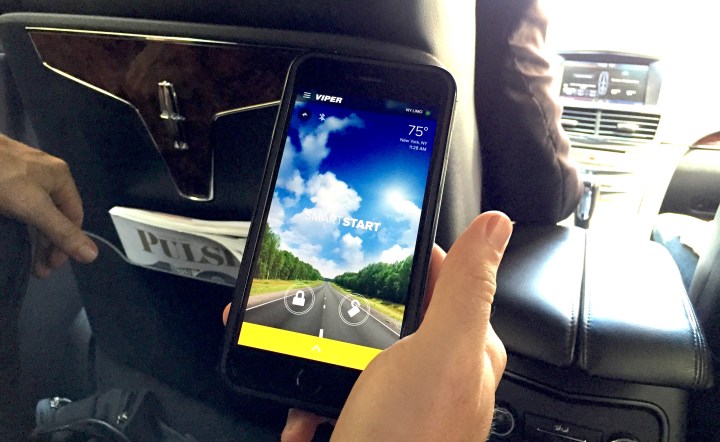
Viper launched SmartStart – a mechanic-installed gadget that let you wirelessly start your car, open the trunk, and more – back in 2009. Version 4.0, launching today, adds the ability to start your car wirelessly by simply speaking to your Apple Watch (A finished Android version will be available in two weeks, the company says).
“Have your watch guide you to your car. Tap your wrist to unlock your doors. Say the word and your engine starts. Wearable technology has the potential to connect drivers to their cars like never before,” said Frank DeMartin, Senior Vice President of Product Development and Engineering for Viper.
To demonstrate SmartStart in action, Geoff Weathersby, Vice President of Product Management for Connected Car stuff for Viper maker Directed, took me on a summer cruise — a brief one, around the block.
Stepping to the curb, Geoff unveiled an Apple Watch – 42mm, Green Sport Band edition, if you’re curious – and with a few words to Siri, he shut off the engine on the car he had idling at the curb. It’s a little thing, sure, but for anyone who’s ever sweated out the wait for the air conditioner to kick in or nearly froze their hands to the steering wheel in the morning, it’s a godsend.
SmartStart isn’t something you can plug in yourself; the hardware needs to be installed by a mechanic or dealer. It should work with virtually any car, the company says. Once connected, the unit lets drivers talk to or tap on their smartwatch to find, lock, unlock, and remotely start their vehicle, as well as manage alerts. Drivers can follow turn-by-turn directions back to their car, pop their trunk, hit the panic button, and receive low battery alerts all from their wrist.
The new version of the app offers a few new features, beyond smartwatch compatibility. Users can set a SmartFence to designate certain areas as restricted—they receive an alert when the car enters or exits that perimeter. When maintenance is needed, the app notes diagnostic trouble codes (DTCs) and explains the issue. Drivers can call upon roadside assistance in an emergency with a tap of their finger.
The race to smarten older cars has been heating up in recent months, with products like Vinli, Automatic, and the new Verizon Hum making it easier than ever to modernize an aging ride. Viper’s product offers functionality that requires complex installation, but many other products with limited or simply different features don’t require any installation at all – simply plug a dongle into the ODB port on your car and vroom, you’re off.
There’s a downside to all this connectivity, of course, underscored by the recent Fiat-Chrysler recall of 1.4 million Jeeps when it was revealed that a security flaw could let hackers access a moving car in frightening ways. GM had a similar issue, quickly patched. And a Tesla hack revealed earlier this month let hackers completely shut down a moving car.
Still, the public has voted, notably and loudly in the case of Viper, which claims over 3 million downloads of its SmartStart app to date. And on a cold day, with the prospect of an icy steering wheel looming at 6:30 in the morning, the warmth of a pre-started car sounds awfully appealing.
Editors' Recommendations
- The Nanoleaf Canvas can now control your smart home through touch
- Smart clothes could let you change your temperature with the touch of a button
